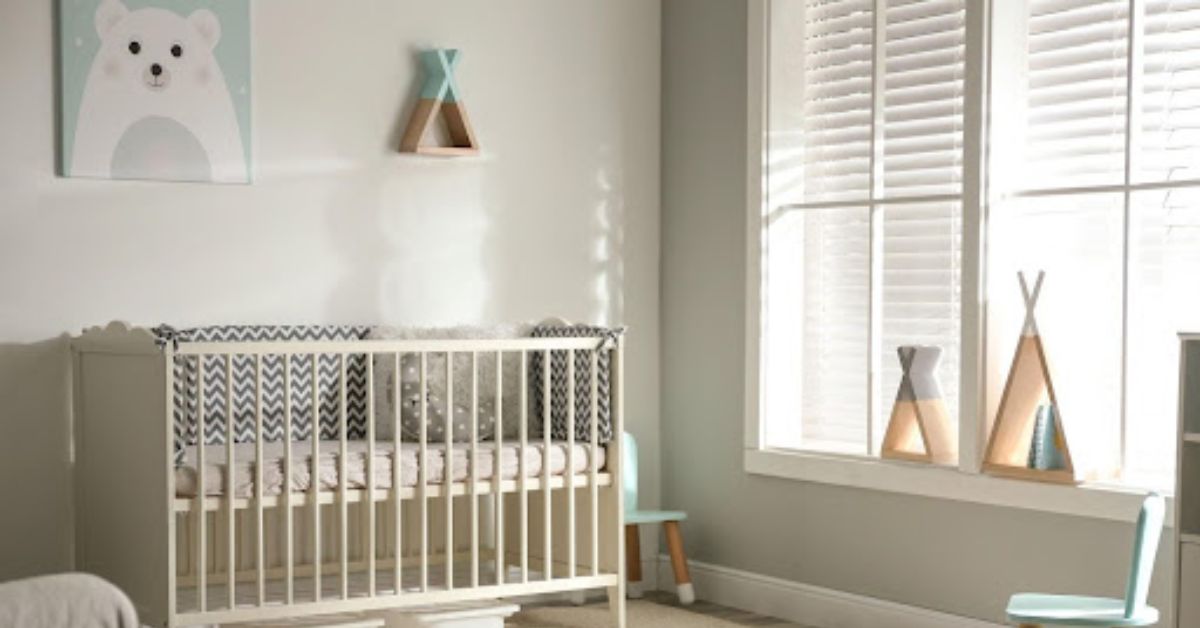Keeping your nursery clean and free from harmful bacteria is crucial for your baby’s health and comfort. When it comes to wooden furniture, especially a timber baby cot, extra care and attention are required to ensure it remains both sanitary and safe. By employing consistent hygiene practices, you can prevent the buildup of germs on wooden surfaces, reduce allergens, and create a nurturing sleeping space for your infant. Regular cleaning routines, combined with the right techniques, help maintain a hygienic environment that supports your child’s well-being.
Wood is a natural material that can absorb moisture, harbor dust, and sometimes develop cracks if neglected. These factors can contribute to bacterial growth if not managed properly. Yet, with a proactive cleaning approach, you can transform the wooden surface into a germ-free haven. From using baby-safe cleaning products to monitoring humidity levels, your choices can significantly impact your child’s health and safety. By following the tips below, you’ll ensure your little one’s sleeping area remains pristine and welcoming.
The Importance of Regular Cleaning
Regular cleaning is the first step toward preventing germs and allergens from accumulating. A gentle wipe with a soft cloth and mild cleaning solution helps remove dust, stains, and bacteria that can develop over time. Prioritizing consistency in your cleaning schedule makes it easier to keep your house and surfaces free of lingering contaminants.
Choosing Baby-Safe Cleaning Products
Selecting the right cleaning solutions is vital for preserving both the wood’s integrity and your toddler or baby’s health. Harsh chemicals can lead to irritation or allergic reactions, so opt for natural or organic products without strong fragrances. These mild formulas can effectively remove dirt and bacteria without leaving behind residues that could be harmful.
Ensuring Proper Ventilation
Good airflow plays a pivotal role in preventing bacterial and fungal growth on wooden surfaces. By allowing fresh air to circulate around the cot, moisture does not become trapped in corners or seams. Adequate ventilation also helps remove airborne dust particles, keeping the area cleaner for longer while promoting a healthier environment for your baby.
The Role of Mattress Maintenance
Your baby’s mattress is in constant contact with their skin and respiratory system, making it a potential hotbed for germs. To keep it clean, use a removable, washable cover that you can launder frequently. This acts as a barrier between the mattress and your child, trapping spills and stains before they can seep into the core.
When you change the sheets, take the opportunity to vacuum the mattress surface. This removes dust mites and other particles, minimizing possible allergens. Periodic airing of the mattress, ideally under direct sunlight for the first few months for a short time, can also help kill bacteria and freshen the surface. By caring for the mattress, you significantly reduce the presence of germs in your baby’s resting space.
Avoiding Excess Moisture
Excess moisture can cause wooden furniture to warp or develop mildew, which in turn fosters bacterial growth. After cleaning, ensure you thoroughly dry the wooden surface to prevent water from seeping into the grain. You can use a clean, dry cloth or even a gentle fan to facilitate quicker drying.
If you live in a particularly humid climate, consider using a dehumidifier in the nursery. Keeping humidity levels in check not only safeguards your newborns baby’s cot or bassinet from damage but also helps maintain a healthier environment overall. Proper moisture control eliminates the conditions where bacteria and mold could thrive.
Protective Covers and Liners
Investing in high-quality protective covers can shield the cot from spills, dust, and daily wear. A good quality waterproof liner or mattress protector serves as a first line of defense, keeping liquids from soaking into wood or padding. These covers are easy to remove and wash, simplifying the cleaning routine while prolonging the life of the cot mattress and furniture.
Safe Storage of Bedding
Bed sheets, blankets, and other bedding can become carriers of germs if not stored properly. Once you’ve used loose bedding and washed and dried them, store them in an airtight container or sealed drawer. This prevents dust buildup and minimizes the chance of microbes developing on the fabric. When you’re ready to use the bedding again, it will be fresh, clean, and safe for your baby.
Spot Cleaning for Spills
Babies are prone to spills and accidents, making spot cleaning a necessary practice. Swiftly address any stains by blotting the area with a damp cloth and mild cleaning solution. Avoid scrubbing forcefully to prevent damage to the wood’s finish. Once the spill is removed, gently dry the surface to halt any potential water damage.
Deep Cleaning Strategies
Occasionally, a more thorough deep clean of right cot is essential. In these instances, empty the cot and vacuum the entire surface to remove hidden dust in crevices or joints. Use a soft-bristled attachment to avoid scratching the wood. Next, gently wipe the surface with a slightly dampened cloth dipped in a mild cleaning solution, then immediately dry the area.
Pay special attention to corners and edges, where dust and germs often accumulate unnoticed. Ensure that all moisture is wiped away before replacing the mattress or bedding. This meticulous approach preserves the wood’s sheen and reduces hidden pockets where bacteria can flourish.
Monitoring Your Cot’s Finish
A high-quality finish acts as a protective layer against moisture, dust, and stains. Periodically check for signs of peeling, cracking, or discoloration, as a compromised finish can make the wood more vulnerable to bacterial growth. If you notice any damage, consider applying a baby-safe sealant or wood wax recommended for nursery furniture to help restore a durable barrier.
Rotating Cot Placement
The positioning of your baby’s sleeping area can influence how quickly it accumulates dust or moisture. Rotate the cot occasionally to equalize exposure to light, air circulation, and temperature fluctuations in the room. This simple practice minimizes prolonged dampness or stale air in one specific area of toddler bed, contributing to a cleaner sleeping space for your child.
Checking for Signs of Wear
Consistent use can inevitably lead to loose screws, cracked wood, or unstable joints. While these issues might not always be visible, they can harbor germs if left unaddressed. Run your hand over the surface to detect any roughness or looseness, and promptly tighten or replace compromised components. Maintaining a sturdy frame prevents bacteria from nesting in hidden crevices.
Encouraging Overall Nursery Cleanliness
A hygienic environment for your as baby grows in extends beyond the wooden cot itself. Regular vacuuming or mopping of the nursery floor reduces dust, pet dander, and allergens. Keep stuffed toys and plush items washed and aired out, as they can attract dust mites. Clean window treatments, wipe down surfaces, and consider using an air purifier to tackle airborne contaminants. This holistic approach fosters a consistently healthy atmosphere.
Maintaining a Routine Cleaning Schedule
Consistency is key when aiming for a germ-free sleeping area. Set a weekly or bi-weekly schedule to wipe down all wooden surfaces, launder bedding, and evaluate the mattress cover. By adhering to a plan, you’re less likely to miss areas that can become breeding grounds for bacteria.
Over time, a routine not only helps you spot problems early but also ensures the baby’s nursery remains welcoming and hygienic. Creating a checklist of tasks can streamline this process, making it easier to stay organized. When you systematically address cleaning, your baby’s resting place will maintain its pristine condition after birth and continue to provide a safe haven for sleep and play.
Keeping a wooden cot clean and germ-free during early years is both achievable and rewarding. By combining careful product selection, thoughtful storage, and regular checks, you can effectively protect your child’s health. It might require a bit more effort at first, but as you settle into a consistent rhythm, you’ll find that maintaining a top cot beds a clean, healthy environment is straightforward and immensely beneficial for your baby’s comfort and well-being.











